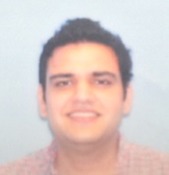Physicist Brachytherapy Training in 2021 - A Survey of Therapeutic Medical Physics Residency Program Directors
M Aima1*, S Simiele2, S Richardson3, C S Melhus4, (1) Stanford University, Stanford, CA, (2) MD Anderson Cancer Center, Houston, TX, (3) Swedish Medical Center-Tumor Institute, Seattle, WA, (4) Tufts Medical Center, Boston, MA
Presentations
PO-GePV-E-12 (Sunday, 7/10/2022) [Eastern Time (GMT-4)]
ePoster Forums
Purpose: This work was envisioned as the first comprehensive collection of information regarding physicist brachytherapy training. The current status of brachytherapy training received by residents enrolled in CAMPEP-accredited programs was assessed by surveying residency program directors (PDs).
Methods: A survey vetted by AAPM councils and approved by ExCom, consisting of 23 questions of four types, was distributed amongst PDs. The questions collected information regarding six areas: (1) Types of modalities, sources, treatment sites, and dose calculation algorithms utilized at each institution; (2) Annual patient- and fraction-based caseload as well as the brachytherapy training duration; (3) AMP eligibility requirements; (4) PDs’ views on brachytherapy as a treatment modality; (5) PDs’ views on the brachytherapy training received by residents; and (6) A free response question to identify additional thematic information.
Results: Seventy-two directors accessed the survey online, and 55 fully completed the survey. Nearly all programs (98%) utilize HDR treatments with 74% using LDR techniques. All institutes treated gynecological sites, and the next most common treatment sites were prostate (80%) and breast (53%). Overall, the PDs had a positive outlook towards brachytherapy as a treatment modality. Caseload and time limitations were identified as primary barriers to brachytherapy training by some institutions. Finally, PDs might benefit from more structured guidance related to AMP eligibility attestation for graduating residents.
Conclusion: Based on the responses, it was identified that residencies might benefit from additional resources, such as virtual, inter-institutional, and societal, to support training in an era of declining utilization. In addition, responses demonstrated that, specific to the practice of brachytherapy, there was little commonality between institutions due to the variety of sites, techniques, modalities, and caseload. This challenges uniformity of training in accredited programs. The findings of the survey can be leveraged to improve the training experience for both the PDs and the residents.
Keywords
Taxonomy
Contact Email



